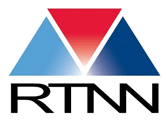
Congratulations to the winners of our 2021 RTNN Collaborative Research Award! This award seeks to identify outstanding research projects, papers, and/or presentations that leverage the resources, equipment, and/or expertise available through the RTNN. Awarded research projects are expected to demonstrate a high-level of research progress and achievement that was made possible only by the use of two or more university sites or collaborators within the RTNN. Dr. Jill Dempsey, Dr. Michael Mortelliti, and Annie Wang share this award for their innovative use of fabrication and analytical techniques available in RTNN to better understand materials used in photo-electrosynthesis cells (DSPECs).
Problem this work addressed: The performance of dye-sensitized photoelectrosynthesis cells (DSPECs) is significantly improved when a core/shell SnO2/TiOx photoanode is utilized, as opposed to simple TiO2 nanocrystalline films. This performance enhancement has been attributed to slower charge recombination dynamics due to electron tunneling from a core-localized electron to the oxidized dye. A fixed rectangular barrier tunneling model has been proposed, in which the SnO2 conduction band is ca. 300–500 mV more positive than that of TiO2. However, this model is based on several poor assumptions and further, this model is challenged by observations in the dye-sensitized solar cell community noting that treatment of TiO2 electrodes with a chemical bath of TiCl4 (to form a TiOx coating on the core material) also enhances device efficiency. If applying a fixed rectangular barrier model based on data from bulk single crystals, as is employed for SnO2/TiOx core/shell photoanodes, no barrier to electron transfer would be expected between an electron localized in the core TiO2 and the oxidized dye.
Key Findings: In this work, the researchers obtained a unified understanding of the mechanisms by which SnO2/TiOx and TiO2/TiOx core/shell materials facilitate improved device efficiency in DSPECs and DSSCs. Specifically, they report their use of atomic layer deposition (CHANL) to fabricate an array of TiO2/TiOx and SnO2/TiOx core/shell electrode materials with different shell thicknesses and different annealing temperatures. They comprehensively characterized the electronic structure of these materials using diffuse reflectance (CHANL), X-ray photoelectron spectroscopy (CHANL), and Raman spectroscopies in conjunction with high-resolution transmission electron microscopy (AIF), powder X-ray diffraction (CHANL), and reductive electrochemistry. They then quantified charge recombination dynamics of the dye-sensitized materials using transient absorption spectroscopy. From these data, a physical model was constructed for charge recombination in core/shell materials consistent with all these data.
Impact: By correlating how the electronic structure of the shell material is responsible for impeding charge recombination, this work answers a decade-long question about the mechanism by which anode shells and coatings improve DSPEC and DSSC device performance. This work shows how shell crystallinity and trap state density is critical in the recombination mechanism, emphasizing that there is a critical annealing temperature at which a balance is realized between slow recombination and fast diffusion to the back contact for optimum device performance. This understanding thus provides an explicit blueprint for shell fabrication to improve performance DSSCs and DSPECs.
This research made use of the instrumentation in both CHANL (UNC) and the AIF (NCSU). Further, research was also supported by a grant to high school student Annie N. Wang through the North Carolina Research Triangle Nanotechnology Network, Kickstarter Program.
This work is published in the following paper:








